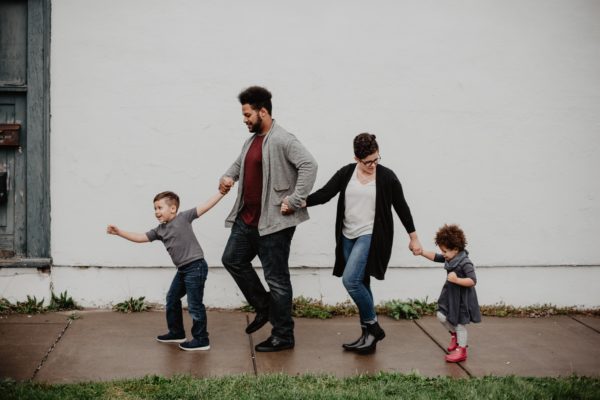COVID19 is not a sexually transmitted disease, so this is rather outside my usual realm, but I’m all about giving you accurate information so that you can have real conversations with your kids and take appropriate actions.
The Basics – What to do right now
- Wash your hands. A lot. Like really, really a lot. More than you ever have before.
- Stay home if you’re sick. Keep your kids home if they’re sick.
- Wear a face mask to protect others and to reduce your own chances of being infected.
- Get vaccinated for the flu. It will prevent about half of us from even getting the flu, and the other half of us will have much milder symptoms. I hate getting shots too, so I get it if you sat this one out thus far. BUT, if a whole lotta people are about to get sick, we’ll need you. Your doctor doesn’t need another patient. Your family members need your helping hands, not another person to care for. Add slack to the system by getting a shot. Just imagine how awful it would be to be hit with both the flu and COVID19! Do yourself – and everyone around you – a favor. Minimize your chance of getting the flu and passing it on to others.
- Don’t panic. Our systems are getting a needed wake-up call. We’re going to learn how to work together and get through this.
What’s up with the States of Emergency?
Where I am, in California, in the USA, the governor has declared a state of emergency. That’s not so much about the pandemic being super dangerous; it’s more about sidestepping legal obstacles.
To effectively quarantine a virus, you’d have to know where it is, who’s got it, etc. To do that, you need to test everyone who might have been exposed.
We have plenty of everything that’s needed to do these tests – reagents, machines, people to run the machines – but in the US, at least, we’re not testing. Why? It’s not legal.
Turns out that getting your lab certified is no small thing. There’s only one lab which is legally allowed to do it – the CDC in Atlanta. If any other lab or doctor runs these tests, they’ll break a bunch of laws and regulations, get sued, lose their licenses, etc.
By declaring a state of emergency, states get expanded legal powers. One thing they can do is allow labs in universities and biotech companies – who have the equipment, reagents, and laboratory personnel – to run these tests. They can use these “preliminary” results while patiently waiting for the CDC to get through its backlog to “confirm” the test results. Meanwhile, public health officials have the information they need to manage the outbreak.
What’s needed to do these tests is old technology, simple to do, cheap as well. Get over the legal hurdle, and we’ll be able to test and respond much more effectively.
So don’t take the “confirmed” cases numbers in the US too seriously…we’re not really testing yet. But there’s no true hurdle to testing, so other countries are doing a much better job of it. You can trust the numbers on a site like this one, while knowing that the official count in the United States is far too low because of this short-sighted legal problem.
In the name of not overwhelming our medical system with everyone who might need treatment beyond staying home, our officials are deciding what gatherings to cancel and whether students should learn online rather than in their classrooms for the next few weeks and months. Social distancing will help lower the infection rate, and that will help keep the case load within the range our medical infrastructure can handle.
Truth is, we don’t know everything about this virus yet. What we know so far shows that kids are the least susceptible to this virus. Children and healthy adults will probably get sick and recover, and eventually herd immunity will halt the coronavirus’s progress.
What’s needed in the Future
- Continue with the hand washing, mask wearing, flu vaccination, and staying home when sick.
- Advocate for adding pandemic experts back into our governing bodies and NGOs, and fund their efforts. We had a good bit of warning on this one, watching the events unfold in Asia, but no top-level officials here to take up the reins and formulate a cohesive response. More on that here.
- Advocate for labs to be certified. Let’s have at least one certified laboratory in every major city!
Talking with kids about the pandemic
- Help them wash their hands frequently by doing it with them. Using soap and water is more effective than hand sanitizer. Make up a game or sing a silly song to make it fun.
- Listen to and validate their fears and frustrations. It’s disappointing that story time at the library has been cancelled. It is unusual to see people in face masks. Emphasize that there is very little risk to them, their friends, or to the healthy adults who care for them.
- Explain why elderly and other vulnerable people in your family and community might choose to stay home or decline visitors. Help children reach out in other ways, sending letters and care packages, making video calls, etc.
- Use this opportunity to explain vocabulary words like “virus”, “pandemic”, and “quarantine”. They’re hearing the words without understanding them, which can sound scary without making much sense. Demonstrate that this is a topic that’s ok to talk about.
We’re all going to have to be adaptable, not too attached to our plans and usual routines. Concentrate on staying connected to your people and providing for the sick and isolated. We’re getting a much needed reminder to be grateful for the health of our loved ones.
And if you find yourself at home with your kids, maybe it’s time for that conversation about sex you’ve been putting off. Just sayin’…
In support of you,
Anya
P.S. Need some support with that conversation about sex you’ve been putting off? I’ve got webinars and interviews on just about every topic having to do with kids and sex. Join our membership here.








